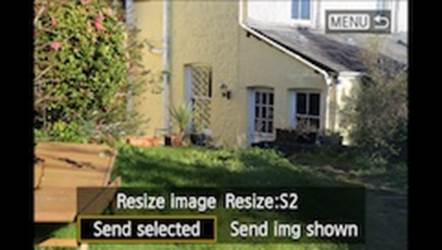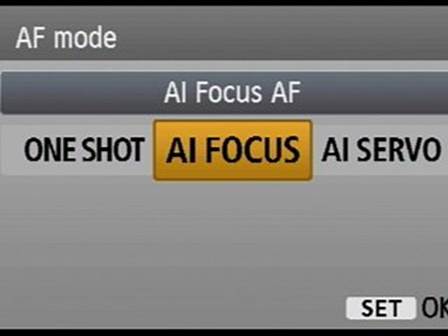When you set the camera configuration to
connect by this way, EOS utility boosts automatically. As for smartphone app,
you need the camera at Live View mode for previewing, but you can also move in
and out of the live view mode and continue blind shooting with all speed and
lowlight advantages of phrase-defined AF of 6D

Connecting
and uploading to social network
6D can also be able to connect and upload
onto the social network including Facebook, Twitter and Youtube. To install, you
need to register the Image Gateway platform of Canon; you can also upload
images here. You also need to register your camera as a device on the Image
Gateway profile by EOS Utility app. Once finishing, uploading picture is a
quite simple process regarding choosing the page you want to upload from the
menu, choosing the pictures, changing the size if requested and then uploading.
To smaller images, the uploading process only takes a few seconds on the fast
broadband connection; it takes several minutes to upload a 3MB file to Image
Gateway page.

Change
the size if requested
The images uploaded on Twitter are saved on
Image Gateway with the link on tweet, but you have no adding, noting,
commenting option, which is pretty ashamed. Uploading images on Facebook is
added to the Canon Image Gateway album and posted onto your wall.
In general we experience of using the Wi-Fi
function of EOS 6D is pretty positive and enjoyable. All of them work as they
should block some small complaints, which most disappointedly is the slow speed
with remotely previewing window updates and the trends to freeze the app in a
while. If you want to control Nikon D600 through Wi-Fi, you will need a WU-1a wireless
adaptor that connects to the USB port. Compared to pre-integrated Wi-Fi of 6D, of
course you will have to pay for the Nikon adaptor and bear them sticking
outside the port with the open top, but they’re pretty small, so it’s just a
small inconvenience.
I’ve just checked WU-1A with Nikon D5200.
Nikon iOS app is not well-designed or full of function as of Canon, and when I
check it, the Nikon D5200 screen still empty while the adapter is already used.
The Nikon app doesn’t provide anything like the achievable control level on 6D,
it doesn’t allow you to upload the image sample and you can’t load directly to
share on the social network page, first you need to download that images to
your phone and move from that then.
The pre-defined purpose of travel and
landscape photographers, the integration of GPS recorder in 6D has a lot of
meanings and almost one of its important selling points. The GPS function works
as the same as the compact containing it such as PowerShot S100 and SX260HS. With
enabled GPS, the images auto marked with their geographical location data can
be pinned on a map.
When using, the only sign showing that GPS works
is a screen symbol. You can set up the time between which data is updated and 6D
will also record a track list that you can download and use to record the story
about your trip on a map. There’s also a provided special map utility, allowing
you to pin the images on the map and add location info manually for the images
with no info. However, I guess most of 6D users will do this important thing in
Aperture, Lightroom or other app with supporting.
While using, GPS proves accurate and
reasonably fast though in some occasion it takes more than 1 minute to find the
satellite which is able to deliver a certain position after it’s activated.
Once it’s activated, of course, it will always open even when you turn off the
camera. That’s the thing you need to do if you want to have a follow-up, but it
actually consume energy noticeably faster and if you intend to use GPS regularly,
investing in a backup battery is wise.
Note that some area providing a 6D version
that is not integrated with Wi-Fi and GPS, normally because of adjusting
purpose – this model has the name EOS 6D (N).
Autofocus
EOS 6D has an 11-point AF system with only
1 intersection, sensitive to both horizontal and curve line, at the center.
This seems to be basic when comparing to the 39-point AF system of D600 with
9-intersection sensor, and as a result, a lot of viewer discount Canon based on
the technical specs at releasing day. But when the AF system of D600
undoubtedly performs better than 6D when it starts tracking activity, Canon has
its own vital advantage: announce to auto focus at much lower light level.

EOS
6D has an 11-point AF system with only 1 intersection, sensitive to both
horizontal and curve line, at the center.
To check that, I set up EOS 6D and D600 on
a bracket in a dim-lit room at night and focus on a bookshelf which is about 2m
away; both cameras use the lens with the same focal length as the f4 max lens
aperture. Even with that kind of dim-lit room, it still proves that there’s no
problem with the AF system on both cameras; Canon affirms that EOS 6D can be
cable to keep the AF down to EV-3, pretty equivalent to the light level
provided when there’s full moon.
With the light in the room off, the only
illumination on the bookshelf is provided by my 15-inch MacBook Pro screen on
the table, which is also 2m away from the bookshelf. This time, while 6D is
able to focus (though it takes a second to reach that) Nikon D600 can’t even do
so. To give you the idea about the light level: at ISO 1600, 6D measures the
1-second exposure at f4.
To make D600 focus by AF I have to move the
light source closer, about 1m from the bookshelf, applying inverse square law, D600
requires four times of 6D light level for autofocus. While it’s had to have a rigorous
scientific test I think there are reasons to conclude that AF of Canon EOS 6D
actually has the functional capability in much lower light level than that of Nikon
D600.

As all Canon DSLR, 6D provides 3 AF, One
Shot AF modes for still-life, AI Servo AF for moving stuff, and AI Focus AF automatically
switching from One Shot to Servo when it detect that the object starts to move.
Canon DSLR users will also be familiar to the process of choosing AF point by
using the command dial or control pad to rotate AF point when they’re lit on
the viewfinder.
EOS 6D also provides a limited version of
existing AF customization on EOS 5D Mark III including Tracking and
Acceleration/Deceleration sensitivity, even there’s no “cover” reset. There’s
also option for Al priority settings for focusing/ independently shooting for
the first and next images. Therefore, for a portrait and landscape
photographer-oriented camera, EOS 6D provides a quite sophisticated control for
focusing on moving objects.
In Live View EOS 6D provides 3 AF mode
options, the default option is Live Mode that uses a silent and continuous
contrast base system. The second one attaches to focusing on the contrast base,
but adds face detection. Finally, Quick Mode moves the mirror downward to take
a reader from the AF 11-point phrase-changing system. Gently press the button
shutter release can quickly understand as autofocus in any mode, though
pressing the AF-ON button on the edge has the same effect if preferred.